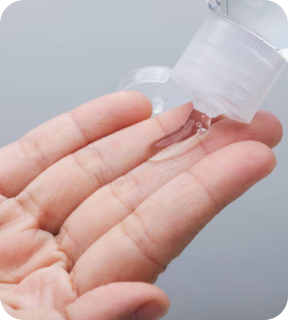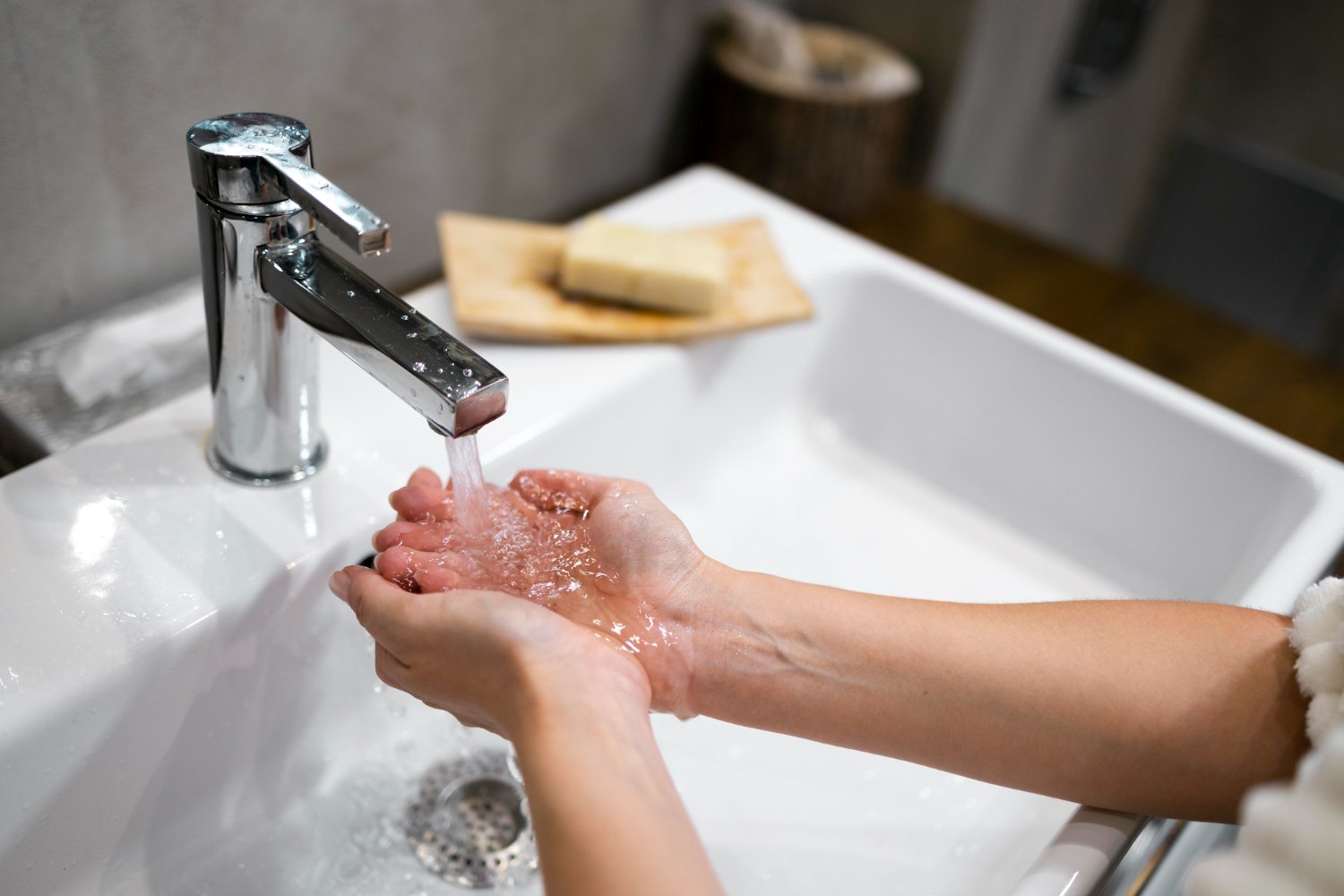
Hand Sanitizer
Don’t let germs get in the way of your day! Our hand sanitizers are perfect for on-the-go protection. Clinically proven and dermatologically tested products to keep hands healthy and safe.
Hand sanitizers have become crucial in Singapore’s public health, especially post-COVID-19. Once limited to medical settings, they’re now widespread across various public spaces, reflecting the city-state’s commitment to hygiene and health.
Our Hand Sanitizer
microshield® handrub
microshield® handrub is a reliable hand disinfectant with alcohol and chlorhexidine gluconate (CHG) for everyday use.
desderman® care gel
Hygienic and surgical hand sanitizer with the benefit of (ProPanthenol-complex) to help improve hand’s hydration, elasticity and smooth appearance.
microshield angel blue®
Hygienic alcohol hand sanitizer with no alcohol scent, added with properties to keep your hands soft and hydrated.
Benefits of Using Alcohol Hand Sanitizer
Alcohol-based hand sanitizers offer several benefits, particularly in promoting hygiene and public health:
- Effective Germ-Killing Properties: Alcohol is highly effective at killing many types of bacteria, viruses, and fungi. It works by denaturing the proteins of these pathogens, effectively neutralizing them.
- Rapid Action: These sanitizers act quickly, eliminating germs from the hands in as little as 15-30 seconds. This swift action is crucial in high-traffic areas or situations where quick sanitization is necessary.
- Ease of Use: Alcohol-based hand sanitizers are easy to use and can be applied directly to the hands. They don’t require water or towels, making them convenient for on-the-go hygiene.
- Reduced Risk of Spreading Infections: By effectively killing germs, these sanitizers reduce the risk of spreading infections, especially in communal settings like schools, offices, and public transport.
- Skin-Friendly Options: Many alcohol-based sanitizers contain emollients or moisturizers that help prevent dryness and make hands soft , making them suitable for frequent use.
- Accessibility: These products are widely available in various settings, from healthcare facilities to retail stores, enhancing public access to hand hygiene products.
- Supports Public Health Measures: During a pandemic or an outbreak, alcohol-based hand sanitizers are a key component of public health strategies to control the spread of illness.
- Portable and Convenient: Available in various sizes, they are easy to carry, making personal hygiene feasible regardless of location.


Comparing Hand Sanitizer and Hand Soap
When comparing hand sanitizer and hand soaps, it’s important when discovering their distinct roles in maintaining hand hygiene, as both are crucial in different scenarios:
Mechanism of Action
- Hand Sanitizer: Alcohol-based hand sanitizer works by killing germs on the surface to keep hands clean. The alcohol content (typically 60-95%) effectively neutralizes various bacterias, viruses, and fungi.
- Hand Soap: Soap works differently. It doesn’t kill germs but instead removes them from the hands. When you wash with soap and water, the molecules bind with both water and the oils on your hands (where germs reside). This allows germs to be rinsed away with water.
Effectiveness Against Germs
- Hand Sanitizer: Very effective against most bacterias and viruses, especially when soap and water are not available. However, it’s less effective on greasy or heavily soiled hands and may not eliminate certain types of harmful chemicals.
- Hand Soap: Washing hands with soap and water will also keep hands clean, especially against certain types of germs, like norovirus and Clostridium difficile, or when hands are visibly dirty or greasy.
Usage Situations
- Hand Sanitizer: Ideal for situations where soap and water are not readily available, such as in public transport, after handling money, or in outdoor settings.
- Hand Soap: Recommended in settings like bathrooms and kitchens, before eating, and after handling raw foods, as it is more effective in removing germs and dirt.
Health
- Hand Sanitizer: Can be drying to the skin, especially alcohol-based varieties. Many formulations now include moisturizers that scent free to mitigate this effect.
- Hand Soap: Frequent use, especially with hot water, can also dry out the hands. However, there are many gentle, moisturizing soap options available.
Convenience
- Hand Sanitizer: More convenient when on-the-go due to its portability and the fact that it doesn’t require water.
- Hand Soap: Requires access for a place to rinse, thus is less convenient in outdoor or transit settings.

Usage Guidelines for Hand Sanitizer
- Correct Amount: Apply enough to cover all hand surfaces.
- Proper Application: Rub hands together, covering all areas, until dry (about 20 seconds).
- Use When Necessary: Ideal when soap isn’t available.
- Storage: Keep away from children, sunlight, and heat due to flammability.
- Safety: Avoid eye contact and ingestion. Seek medical help if ingested.
- Limitations: Not effective against all germs or on greasy/soiled hands.

FAQ
Hand sanitizer works by using alcohol, typically ethanol or isopropanol, to kill bacterias and viruses. The alcohol disrupts the outer cell membranes of microbes, leading to their destruction. It’s effective against many common pathogens when used properly, with a concentration of alcohol above 60%.
Use them when hand washing is not available, especially after touching public surfaces, before eating, and after coughing, sneezing, or blowing your nose. It’s a convenient way to reduce germs on your hands when you can’t wash them immediately. However, it’s not a replacement for thorough handwashing, which is generally more effective against certain types of germs and for removing visible dirt and grease.
The primary difference between hand sanitizer spray and gel lies in their consistency and application method. Gels has a thicker consistency, which is rubbed onto the hands until it dries. It often contains moisturizers to prevent dryness have a hint of scent. Gel form typically provide a more controlled application, reducing the risk of spilling.
In contrast, sprays are liquid-based and comes in a bottle. It’s applied by spraying it directly onto the hands and then rubbing them together. This way allows for quicker, more even coverage and is often considered more convenient for sanitizing surfaces as well.
Yes, you can bring sanitizer on a plane in Singapore, but there are restrictions. In line with international air travel regulations, liquids in carry-on luggage must be in containers of no more than 100ml each, and all containers must fit in a single, transparent, resealable plastic bag with a total capacity of not more than 1 liter. For checked luggage, there are usually no such restrictions on the quantity, but it’s advisable to check with the specific airline for any additional rules or limitations.
Our Hand sanitizer is specifically designed for use on the hands and are not recommended for full-body application. Their high alcohol content, which is effective for killing germs on hands, can be harsh and potentially harmful if applied over large areas of the body. It can lead to skin irritation, dryness, or even chemical burns in sensitive areas. For body sanitization, regular bathing is the most effective and safe method. If you’re concerned about exposure to germs, focus on frequent handwashing, which is a key step in preventing the spread of infections.
Hand Sanitizers from Schulke have undergone stringent tests to obtain European standards – EN1500 or/and EN 12791. Our hand sanitizers are also hospital-grade and widely used in hospitals.
A sanitizer can keep hands feeling fresh to some extent by reducing the number of germs and possibly eliminating light odors. They are effective for quick cleaning and can impart a clean, and fresh scent, depending on their ingredients. However, they are not a substitute for washing hands with soap and water, which is more effective for thoroughly cleaning hands, removing dirt, grease, and stronger scent.






